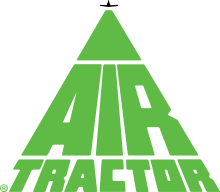AEA Association
Silver Dart #4
 |
|
| The AEA Silver Dart in flight. | |
| Role | Pioneer Era aircraft |
|---|---|
| Manufacturer | Aerial Experiment Association |
| Designer | John McCurdy Frederick W. "Casey" Baldwin Glenn Curtiss Thomas Selfridge Alexander Graham Bell |
| First flight | 23 February 1909 |
| Status | Destroyed in crash |
| Primary user | Aerial Experiment Association |
| Produced | 1908 |
| Number built | 1 |
.
History Aerial Experiment Association
(AEA
Silver Dart (or Aerodrome #4)
.png)
The Silver Dart (or Aerodrome #4) was a derivative of an early aircraft built by a Canadian/U.S. team, which after many successful flights in Hammondsport, New York, earlier in 1908, was dismantled and shipped to Baddeck, Nova Scotia. It was flown from the ice of Baddeck Bay, a sub-basin of Bras d'Or Lake, on 23 February 1909, making it the first controlled powered flight in Canada. The aircraft was piloted by one of its designers, Douglas McCurdy. The original Silver Dart was designed and built by the Aerial Experiment Association (AEA), which had been formed under the guidance of Dr. Alexander Graham Bell.
The frame and structure of the Silver Dart were made of steel tube, bamboo, friction tape, wire and wood. The wings were covered with rubberized, silvery balloon cloth provided by Capt. Thomas Scott Baldwin of Hammondsport; hence the name the "Silver Dart". Its Kirkham engine, supplied by Glenn Curtiss, was a reliable V-8 that developed 50 horsepower (37 kW) at 1,000 RPM. The propeller was carved from a solid block of wood. The aircraft had what is now called a canard or an "elevator in front" design. Like most aircraft of its day the Silver Dart had poor control characteristics; likewise, it had no brakes.
2009 Centennial celebrations



A small group of volunteers from the not-for-profit Aerial Experiment Association 2005 Inc. completed building a flying replica of the Silver Dart in early 2009. The main goal of the group was to recreate the original flight on 23 February 2009 – again on the frozen surface of Baddeck Bay near Baddeck, Nova Scotia. However, due to weather conditions forecast for the 23rd, the centennial flight and fly-by occurred on 22 February. After a temporary repair made to the front wheel, former Canadian astronaut Bjarni Tryggvason piloted five successful flights that day. The replica is officially considered a Canadian heritage project, and throughout the year was the centerpiece of a series of events celebrating the centennial of the Silver Dart's first flight in Canada. In 2013, it was moved to the Alexander Graham Bell Museum in Baddeck, where it will be on permanent display
0
KmCeiling
0
KmCombat RANGE
0
Km/hAircraft Speed
0
Max Crew
Photo Gallery
Aerial Experiment Association
(AEA Silver Dart (or Aerodrome #4)


Aerial Experiment Association
(AEA Silver Dart (or Aerodrome #4)
General Info
-
-
- Crew: 1
- Capacity: 2
- Length: 30 ft 0 in (9.14 m)
- Height: 9 ft 7 in (2.92 m)
- Wingspan: 40 ft 1 in (12.22 m)
-
Powerplant
-
-
- Wing area: 563 sq ft (52.3 m2)
- Empty weight: 320 lb (145 kg)
- Powerplant: 1 × V-8 air-cooled piston engine originally (later changed to water-cooling by McCurdy) , 50 hp
-
Performance
- Maximum speed: 40 mph (64 km/h,
- Range: 20 mi (32 km, 17 nmi)
.
Links to Youtube & Others
Cessna ended production of the design in May 2017 due to lack of customer demand for the aircraft as a result of competition from the company's own Cessna Citation M2.
AEA Experiment
(AEA Silver Dart
Development of the type continue and in 1935 the Bf 108B appeared with the fin and rudder having undergone modifications.
Youtube Link
Conceived as a competitive aircraft the Bf 108 would take part in the 1936 Berlin Olympics.












